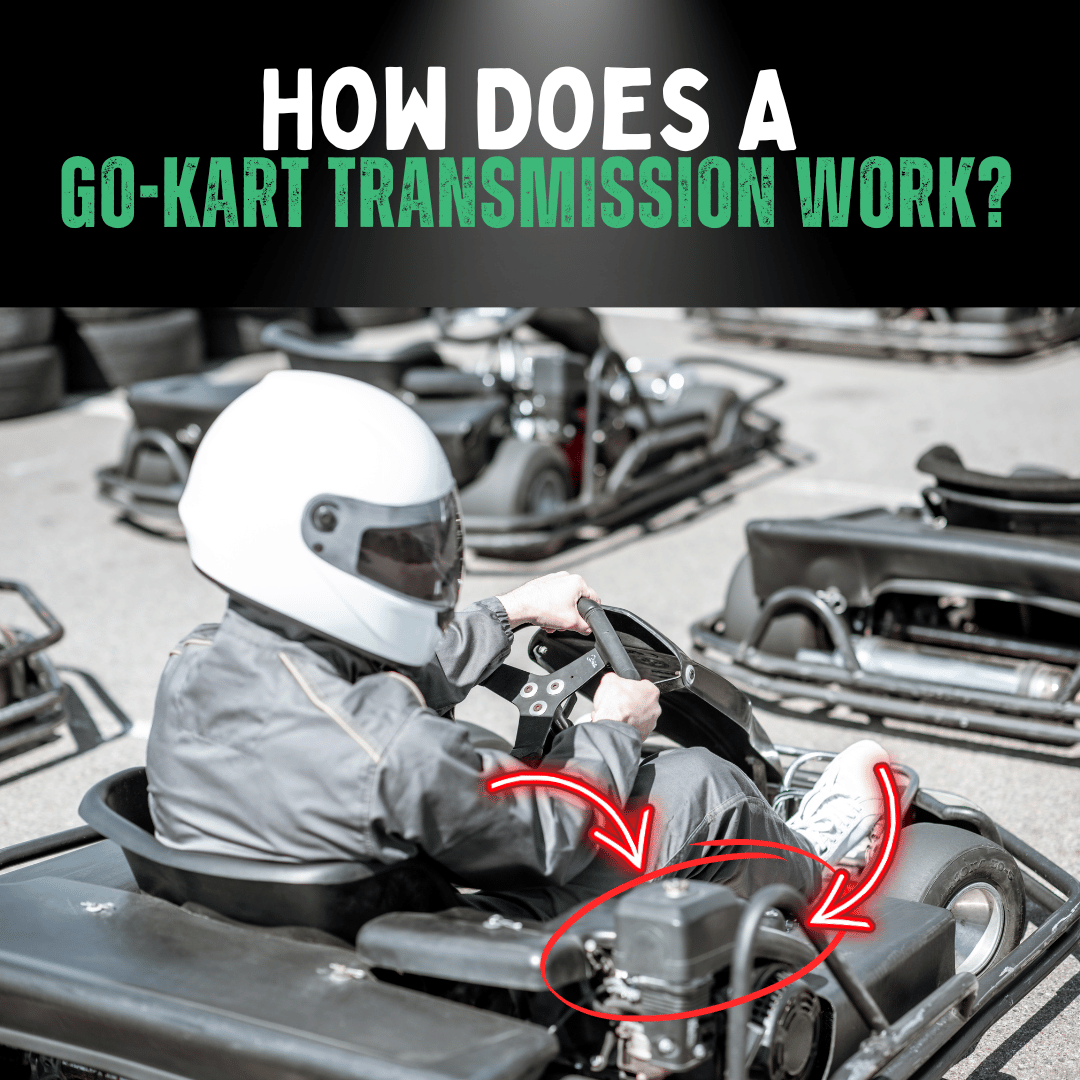
Published: August 14, 2023
Updated: March 26, 2025
What makes a go-kart zoom around the track? It’s the transmission!
Let’s explore the three main types in 2025—get into go-karting.
How It Works: A go-kart transmission transfers engine power to the rear wheels via pulleys and a belt. As RPM increases, the driver pulley clamps the belt, spinning the driven pulley to control speed.
Types of Go-Kart Transmissions

Direct Drive
Direct drives have no transmission—engine power goes straight to the rear axle. They’re simple, low-maintenance, but lack speed control—learn more.
How It Works: The drive sprocket connects directly to the axle, with a constant gear ratio and no idling unless the engine allows. Common in electric go-karts.
Maintenance: Check alignment and lubricate the axle regularly.
Automatic Transmission
Automatic transmissions shift gears on their own using a torque converter and clutch, adjusting based on RPM—throttle blipping tips.
How It Works: Key components include:
- Torque Converter: Connects engine to transmission, allowing idle and torque boost.
- Planetary Gear Set: Adjusts gear ratios for different speeds.
- Clutch Packs: Engage/disengage gears for smooth shifts.
- Transmission Control Module (TCM): Manages gear shifts based on sensors.
Maintenance: Regular oil changes, clutch inspections, and torque converter checks are key—rear wheel drive care.

Manual Transmission
Manual transmissions give you full control with a gearbox and clutch, ideal for racing—how clutches work.
How It Works:
- Clutch: Disconnects engine from gearbox during shifts—gear details.
- Gearbox: Shifts gears manually via a lever for precise control.
- Shifter Karts: Often have 6-speed gearboxes with reverse—reverse gear info.
Maintenance: Check gearbox oil, inspect the clutch, and ensure rear wheel drive is in top shape.
Comparing Transmission Types
- Direct Drive: Simple, low-maintenance, constant gear ratio, best for beginners.
- Automatic: Shifts gears automatically, 80% efficient, great for casual racing.
- Manual: Full control, variable ratios, ideal for skilled racers but requires more maintenance.
Choose based on your skill and racing needs!
Conclusion
Go-kart transmissions—direct drive, automatic, or manual—each offer unique benefits, from simplicity to control.
Understanding them enhances your racing experience in 2025—happy karting!
FAQs
How does a shifter kart transmission work?
A 6-speed gearbox with a lever: pull to upshift, push to downshift, with a neutral position.
Do go-karts have a gearbox?
Some do—shifter karts have manual gearboxes, while others use direct drive or automatic systems.
Are go-karts manual or automatic?
They can be either, depending on the model: direct drive (no gears), automatic, or manual.
What’s the rear axle’s role in a go-kart transmission?
It transfers engine power to the wheels via the transmission, driving the go-kart forward.
Ready to Race? 🚀
Loved “How Does A Go-Kart Transmission Work?” Want more racing tips?
Visit RiiRoo.com or chat live with us for ride-on fun!







Share:
How Much Money Do Go Kart Racers Make?
How to Fix Go-Kart Acceleration Problems